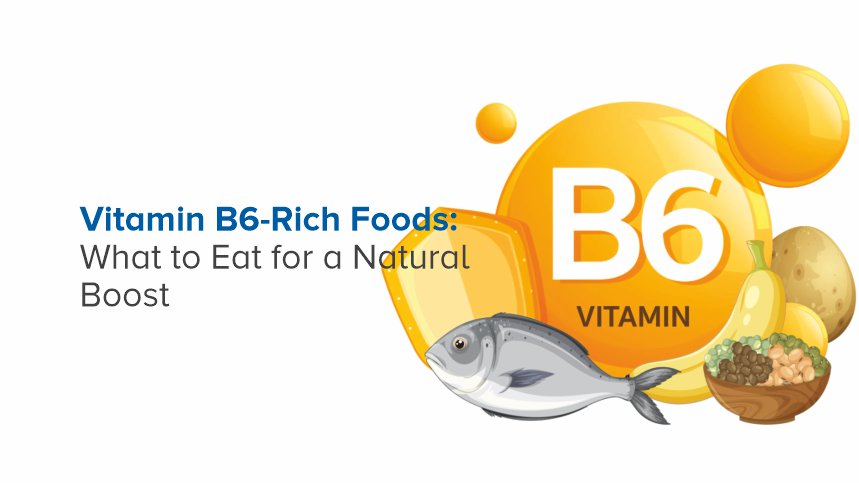


Condition
- Diabetes
- Preventive Health Checkup
- Top tests
- Heart Disease & Hypertension
- Allergy
- Anemia
- Arthritis
- Fever
- Kidney Disease
- Liver Disease
- PCOD
- Thyroid Disorder
- Vitamin Deficiency
- Infectious
- Endocrine Disorders
- Metabolic / Endocrine
- Blood Disorders
- Renal
- Neuro
- Metabolic Disorders
- Gastrointestinal
- Bleeding Disorder
- Genomics
- Pulmonary
- Others
- Oncology
- Gastrointestinal / Skeletomuscular
- Skeletomuscular
- Pulmonary / Metabolic
- Autoimmune
- Toxicity
- Genetics
- Antenatal Profile
- Dermatology / Autoimmune
- Bad Obstetric History
- Cardiovascular
- Autoimmune / Gastro
- Infectious / Oncology
- Blood Banking & Transfusion
- Genomics / Oncology
- Skeletomuscular / Renal
- Drug Monitoring
- Oncology/Infectious
- Oncology / Genomics
- Reproductive Genomics
- New Born Screening
- Skin/Infectious
- Renal / Diabetes
- Cardiovascular / Neuro
- Drugs of Abuse
- Prenatal Screening
- Profile
- Infectious/Derma
- Dermatology
- Gastrointestinal / Renal
- Autoimmune / Neuro
- Skeletomuscular / Autoimmune
- Skeletomuscular / Gastro
- Infectious / Autoimmune
- Renal / Oncology
- Skeletomuscular / Oncology
- Oncology / Skeletomuscular
- Pulmonary / Infectious
- Oncology / Gastrointestinal
- Ocular / Inherited
- Neuroendocrine / Oncology
- Autoimmune / Hemat
- Oncology/Neuro
- Autoimmune / Skeletomuscular
- Reproductive disorders
- Hormonal Disorders
- Infectious / Renal

Tests
- Am-Fit Healthy Womens Check - 2
- Am-Fit Healthy Womens Check - 1
- Am-Fit Shubh Health
- Am-Fit Freedom (1+1)
- Am-Fit Senior Citizen - Male
- Am-Fit Senior Citizen - Female
- Am-Fit Plus (With Vitamin D & B12)
- Am-Fit (With Vitamin D)
- Basic Health Check
- Comprehensive Health Check
- Executive Health Check
- Advance Health Check
- Senior Citizens - Male Check
- Senior Citizens - Female Check
- Am-Fit Freedom Plus (1+1)
- Am-Fit Freedom Plus
- Kids Check
Vitamin B6 plays a crucial role in maintaining optimal health, yet many people don't consume adequate amounts of this essential nutrient. This water-soluble vitamin supports brain function, immune system health, and helps your body convert food into energy. Understanding which foods contain high levels of vitamin B6 can help you make informed dietary choices that naturally boost your intake and support your overall well-being.
Understanding Vitamin B6 and Its Importance
Vitamin B6, also known as pyridoxine, functions as a coenzyme in over 100 enzymatic reactions throughout your body. This nutrient is essential for protein metabolism, neurotransmitter synthesis, and red blood cell formation. Your body cannot produce vitamin B6 on its own, making dietary intake absolutely necessary for maintaining proper health.
The recommended daily intake varies by age and gender. Adult men require 1.3 mg daily, while adult women need the same amount until age 50, when the requirement increases to 1.5 mg. Pregnant and breastfeeding women have higher needs, requiring 1.9 mg and 2.0 mg respectively.
Top Animal-Based Sources of Vitamin B6
Fish and Seafood
Fish represents one of the richest sources of vitamin B6 available. Tuna leads the category, with a 3.5-ounce serving of yellowfin tuna providing approximately 1.04 mg of vitamin B6. Salmon follows closely, offering about 0.6 mg per serving, while also delivering heart-healthy omega-3 fatty acids.
Other excellent seafood options include halibut, cod, and trout. These fish not only provide substantial amounts of vitamin B6 but also supply high-quality protein and essential minerals. Regular consumption of these seafood varieties can significantly contribute to meeting your daily vitamin B6 requirements.
Poultry and Meat
Chicken breast stands out as an excellent source, providing approximately 0.87 mg of vitamin B6 per 3.5-ounce serving. Turkey breast offers similar benefits, while also being lower in saturated fat compared to red meat options.
Lean cuts of beef and pork also contain meaningful amounts of vitamin B6. Ground turkey and lean ground beef can be versatile additions to meals while contributing to your daily intake goals. These protein sources offer the additional benefit of providing complete amino acid profiles.
Plant-Based Vitamin B6 Powerhouses
Potatoes and Root Vegetables
Potatoes deserve special recognition as one of the most accessible plant-based sources of vitamin B6. A medium-sized baked potato with skin contains approximately 0.54 mg of vitamin B6. Sweet potatoes provide similar benefits while adding beta-carotene and fiber to your diet.
The key to maximizing vitamin B6 content in potatoes lies in preparation methods. Baking or boiling potatoes with their skins intact preserves the highest levels of this nutrient. Avoiding excessive processing helps maintain the vitamin's bioavailability.
Bananas and Tropical Fruits
Bananas represent one of the most convenient sources of vitamin B6, with one medium banana providing about 0.43 mg. This makes them an excellent snack option for athletes and active individuals who need readily available energy and nutrients.
Avocados offer another excellent plant-based source, containing approximately 0.26 mg per cup. Beyond vitamin B6, avocados provide healthy monounsaturated fats and fiber. Papayas and mangoes also contribute meaningful amounts while adding tropical flavors to your diet.
Nuts and Seeds
Sunflower seeds lead the category of nuts and seeds, providing approximately 0.23 mg of vitamin B6 per quarter-cup serving. Pistachios and hazelnuts also offer substantial amounts while providing healthy fats and protein.
These portable snacks can easily be incorporated into meals or enjoyed on their own. Adding a variety of nuts and seeds to salads, yogurt, or oatmeal can boost both the vitamin B6 content and overall nutritional value of your meals.
Fortified Foods and Grains
Breakfast Cereals
Many breakfast cereals are fortified with vitamin B6, making them convenient sources for busy mornings. Some fortified cereals provide up to 2.0 mg per serving, which exceeds the daily recommended intake for most adults.
When selecting fortified cereals, choose options with minimal added sugars and maximum whole grain content. Reading nutrition labels carefully ensures you're getting the intended nutritional benefits without excessive calories or unnecessary additives.
Whole Grains
Brown rice, quinoa, and whole wheat products naturally contain vitamin B6, though in smaller amounts compared to animal sources. These grains provide sustained energy and fiber while contributing to your daily intake goals.
Incorporating a variety of whole grains into your diet supports overall nutritional balance. These foods serve as excellent foundations for meals while providing essential nutrients including B-complex vitamins.
Maximizing Vitamin B6 Absorption
Cooking Methods That Preserve Nutrients
Vitamin B6 is water-soluble and sensitive to heat, light, and air exposure. Gentle cooking methods such as steaming, poaching, or light sautéing help preserve vitamin content better than prolonged boiling or high-heat cooking.
When preparing vegetables, use minimal water and cook for shorter periods to maintain nutrient integrity. Consuming some foods raw, when appropriate, ensures maximum vitamin B6 retention.
Combining Foods for Enhanced Benefits
Pairing vitamin B6-rich foods with other B-complex vitamins can enhance overall nutritional benefits. Foods containing folate and vitamin B12 work synergistically with vitamin B6 to support proper metabolic function.
Creating balanced meals that include a variety of nutrient-dense foods ensures comprehensive nutritional support. This approach helps optimize the utilization of vitamin B6 while supporting overall health goals.
Incorporating Vitamin B6-Rich Foods Into Your Diet
Meal Planning Strategies
Successful incorporation of vitamin B6-rich foods requires thoughtful meal planning. Start by identifying your preferred sources from each food category, then create weekly meal plans that rotate these options.
Batch cooking proteins like chicken, fish, or legumes can save time while ensuring consistent nutrient intake. Preparing snack portions of nuts, seeds, or cut vegetables makes it easier to maintain adequate vitamin B6 consumption throughout the day.
Simple Recipe Ideas
Creating vitamin B6-rich meals doesn't require complicated recipes. A simple salmon and sweet potato dinner provides substantial amounts from both protein and vegetable sources. Banana and nut butter smoothies offer quick breakfast options that combine multiple nutrient sources.
Grain bowls featuring quinoa, chickpeas, and avocado create satisfying meals that deliver comprehensive nutrition. These versatile options can be customized based on personal preferences and seasonal ingredient availability.
Monitoring Your Vitamin B6 Status
Regular monitoring of your vitamin B6 status helps ensure adequate intake and identifies potential deficiencies before they become problematic. Healthcare providers can assess your levels through blood tests and provide personalized recommendations based on your individual needs.
Pay attention to symptoms that might indicate insufficient intake, such as persistent fatigue, mood changes, or frequent infections. These signs warrant discussion with healthcare professionals who can provide appropriate guidance and testing.
Supporting Your Health Through Comprehensive Testing
At AMPATH Labs, we understand the importance of monitoring your nutritional status as part of comprehensive healthcare. Our advanced diagnostic services include vitamin B6 testing and complete nutritional assessments to help you optimize your health through informed dietary choices. Our certified professionals provide accurate, timely results that enable you and your healthcare provider to make evidence-based decisions about your nutrition and overall wellness strategy.
WANT TO BOOK HEALTH CHECKUP ?
Categories
Diabetes
44
Preventive Health Checkup
53
Genomics
1
Others
81
Pulmonary / Infectious
1
Top tests
101
Genetics
1
Gastrointestinal / Skeletomuscular
2
Blood Banking & Transfusion
16
Lifestyle Packages
35
Vitamin Deficiency
12
Heart Disease & Hypertension
37
Allergy
9
Blood Disorders
3
Fever
4
Profile
1
Kidney Disease
8
Thyroid Disorder
5
Liver Disease
6
Anemia
5
Arthritis
4
Infertility
6
PCOD
3
Bone Health
1
Cancer
1
Fatty Liver
1
Recent Blogs
What is Absolute Eosinophil Count (AEC)?
What is Absolute Eosinophil Count (AEC)? A blood test can reveal a great deal...
05-12-2025
ESR Levels: High vs. Low – What They Mean for Your Health
ESR Levels: High vs. Low – What They Mean for Your Health The Erythrocyte...
05-12-2025
How to Choose the Right Blood Test Centre?
How to Choose the Right Blood Test Centre? Choosing the right blood test centre...
05-12-2025





-and-Why-It-Matters.jpg)

